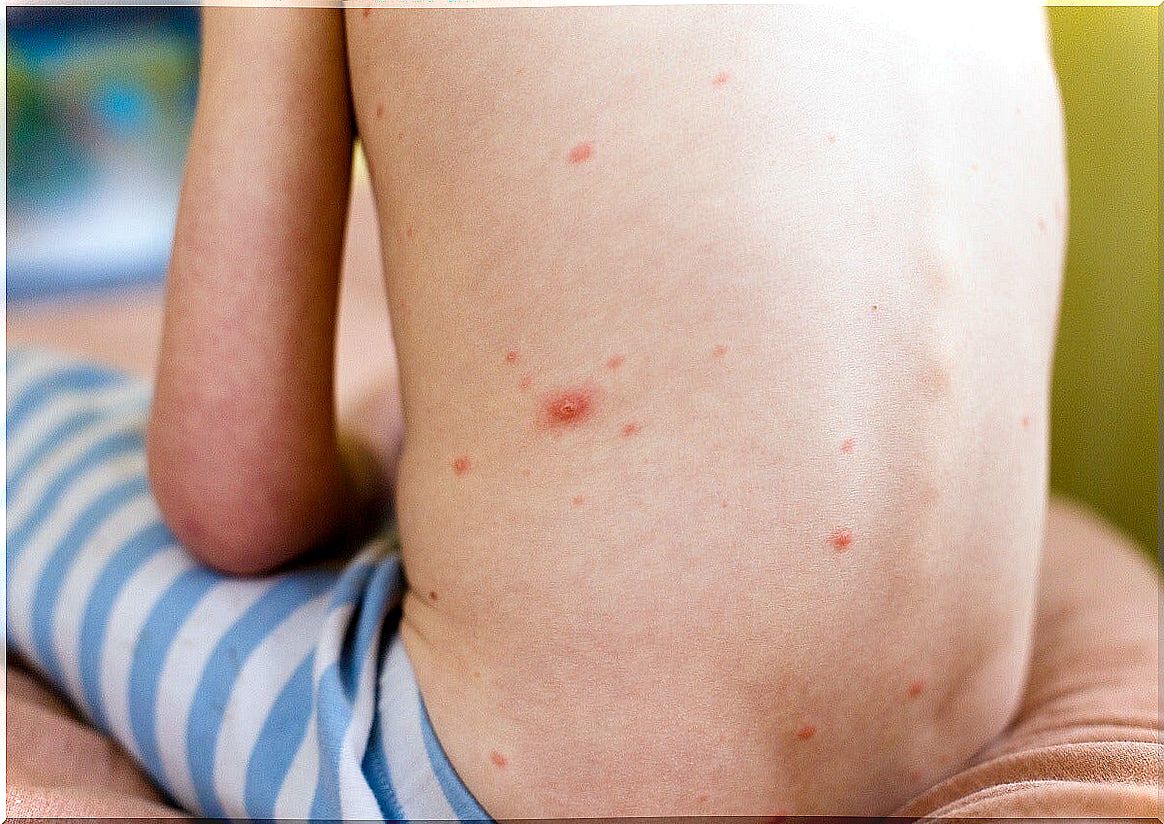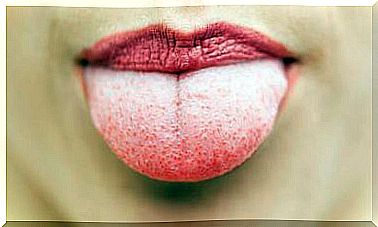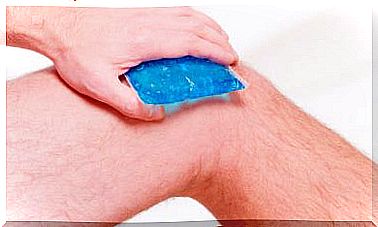Cholinergic Urticaria: What Does It Consist Of?
Cholinergic urticaria is a type of physical urticaria that occurs when the patient is sweating or their body temperature rises above normal. It is characterized by the appearance of a generalized itchy rash with hives (vasodilation lesions and edema of the dermis) 1 to 3 millimeters in length.
Hives can appear anywhere on the skin and the size and itchiness caused will vary depending on the causative etiological agent and the patient himself. If you want to know everything about cholinergic urticaria, read on.
Causes of cholinergic urticaria
Urticaria, in general, can be defined as a skin disease with the appearance of edematous skin lesions, accompanied by itching. These lesions (known as hives ) last between 2 and 6 hours after they appear, but they can reappear in different parts of the body.
Although the pathogenetic mechanism of cholinergic urticaria is not fully understood, there are certain theories. As the Subiza Clinic indicates, one of them is that there seems to be a series of intrinsic disorders in patients that allow the cellular release of histamine when stimulated by cholinergic fibers.
These nerve fibers influence the stimulation of the sweat glands. On the other hand, histamine is an amine that causes many of the well-known allergy symptoms. So it makes sense that cholinergic urticaria and exercise are related.
In summary, we can define the causes of this type of urticaria in 4 large blocks:
- Hypersensitivity to sweat: it is an excessive reaction to the production of sweating.
- Hypohidrosis: pathological lack of sweat production.
- Idiopathic – The underlying cause is unknown.
- Drugs: such as opiates or cholinesterase inhibitors.
According to the International Dermatological Clinic portal, approximately 20% of the world population will present some type of urticaria at any time in their life. On the other hand, the cholinergic variant is very rare.

Symptoms of cholinergic urticaria
As indicated in the Medical Journal of Costa Rica and Central America, the main symptom of this pathology is the appearance of pinpoint papules 2 to 4 millimeters in diameter. In more advanced cases, this can be accompanied by a drop in blood pressure, swelling of the skin and submucosal tissues, and difficulty in breathing.
Some of the clinical signs to look out for are the following:
- Appearance of hives, especially on the trunk, neck and upper limbs. The reaction usually subsides in 20 to 60 minutes.
- Pain and itching, usually after exercising, showering, staying in extremely hot environments, or as an emotional response to stress.
- In severe forms, urticaria can be accompanied by systemic symptoms, salivation, diarrhea, and even bronchospasm. This last clinical sign is usually associated with an asthmatic reaction.
- Hypotension: this is something that appears in the most severe cases and can put the patient’s life at risk. Exercise-induced anaphylaxis is closely linked to this pathology.
As studies indicate, sport-induced anaphylaxis is the clinical picture that should be avoided at all times. It is due to an underlying allergy that does not show up in a normal environment, but intensifies during sports sessions. In these more severe cases, after the formation of hives and angioedema, cardiovascular collapse occurs.
Diagnosis
As surprising as it may seem, the diagnosis of this pathology is confirmed by reproducing the lesions in the patient, raising their local temperature. You want to start sweating, which should cause the characteristic hives to appear quickly.
How can it be treated?
As scientific studies indicate, cholinergic urticaria has been treated with the use of antihistamines, such as hydroxyzine, a drug that relieves itching caused by allergic skin reactions. Doses of 75 to 100 milligrams / day are prescribed, never exceeding 200 milligrams every 24 hours.
This antihistamine should be consumed half an hour before exercising or in situations that trigger the reaction. In addition, certain tips can be followed to avoid getting to take drugs. Among them we find the following:
- Quickly cool the skin at the beginning of an episode.
- Taking periodic baths with hot water can cause a certain tolerance to the increase in body temperature in the patient. Consult this option with your doctor before carrying it out on your own.
- Danazol, a drug for hereditary angioedema, usually works well in the most severe cases.

The rarity of cholinergic urticaria
Cholinergic urticaria is a pathology with a strange presentation and its approach can be complex, since the true cause is not even known. Sweating and exercise are closely linked to it, but they do not have to be present in all cases.
However, taking antihistamines is usually an excellent option. If they are consumed in the appropriate doses before performing the triggering activity, the appearance of anaphylaxis due to sport can be avoided.









